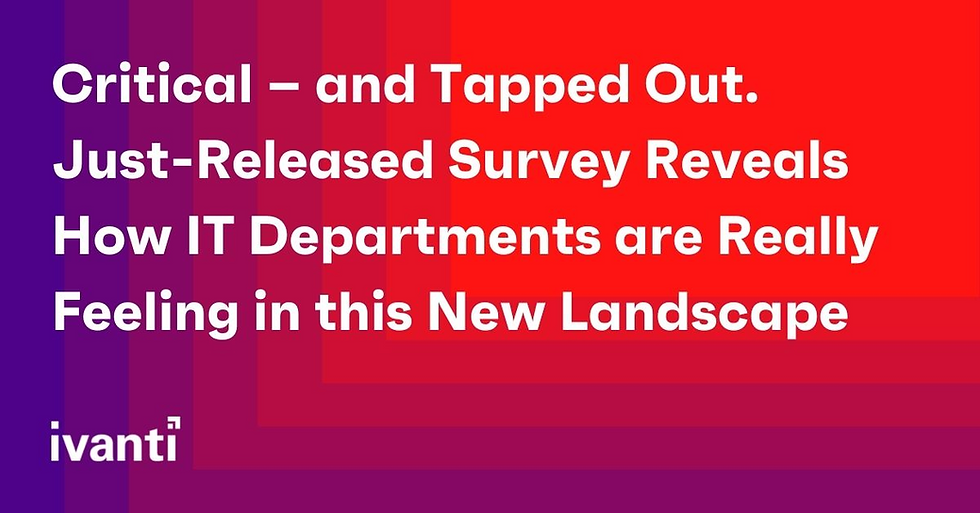Critical – and Tapped Out. How IT Departments are Really Feeling in this New Landscape
- Ryan Krawczyk
- Apr 6, 2023
- 3 min read
Last updated: April 5th 2023 Ryan Krawczyk
This gives new meaning to the term “wired and tired.” A brand-new survey from Ivanti finds that IT professionals have never been considered more critical to a company’s operations and success, and yet in spite of – or perhaps because of – that pressure, they’re facing a mountain of obstacles and unrelenting fatigue.
Double Whammy
As we all know by now, the pandemic rapidly accelerated digital transformation in businesses around the globe. This abrupt shift condensed years of IT logistics into a matter of months – or even weeks. And that’s not even the half of it. IT departments were tasked with not only managing a lightning-speed shift to overall operations, they also had to help support the widespread shift to remote work. Suddenly, HR and finance and every other team interacting with sensitive information was doing so not from behind a LAN and firewall but from couches all over the world.
Meanwhile, the labor shortage hit IT hard. That has meant that not only is IT being asked to do much more, they’re being asked to do it with fewer resources. What does that mean for IT departments, and the business landscape as a whole? The survey results speak for themselves.
According to the survey, the top two challenges organizations face today are keeping up with digital transformation (32%) and keeping talent in technical roles (26%).
And while IT departments are receiving a lot of theoretical support, with 61% of respondents reporting that IT is viewed as critical to an organization’s growth and business strategy, 72% of respondents reported losing team members, with 41% of respondents citing a high workload as the reason for this extreme attrition rate.
Other reasons included:
Unrealistic expectations placed on the team (34%)
Lack of executive support (32%)
Remote work was not a possibility (28%)
Executive hesitancy to adopt automation (26%)
Lack of critical technology to effectively do their job (24%)
Translation: IT departments are being asked to do more than ever, but it’s harder than ever to get their jobs done. That, of course, is a brutal combination.
The Solution
What can help IT get on top of their workload and propel the business forward despite losing team members? In a word, automation. In the survey, two-thirds of decision makers (67%) reported that they accelerated their plans or increased adoption of automated IT service offerings due to the pandemic. And yet, only 1% of decision makers have actually completed their adoption of automated services.
That leaves 99% of organizations rutted in manual IT operations more than 18 months into the pandemic. And it’s not for lack of results when organizations do automate. The majority of respondents reported that automating IT services saves the IT department between one and eight hours for every single service request. For organizations with more than 50% of their IT services automated, the time saved per service request leaps to an eye-popping 16+ hours per service request. You don’t need to be a statistician to see how that would add up.
Of course, simply identifying automation as the solution isn’t enough. You have to get there. That’s where a cloud-to-edge, comprehensive, hyperautomation platform like Ivanti comes in. The workloads and pressure are only going to increase, and companies that will thrive in – not just survive – this new digital business landscape are going to be those who embrace the shift and make the investment in automation sooner rather than later.
Ivanti surveyed 250 enterprise IT professionals across North America, APAC and EMEA from August to October 2021. For more on the survey, click here.




Comments